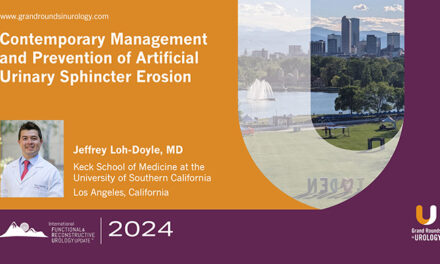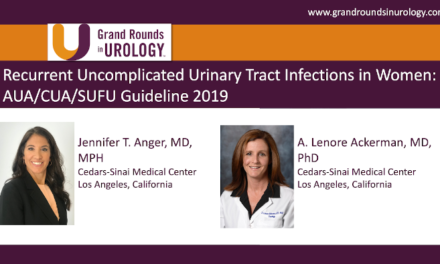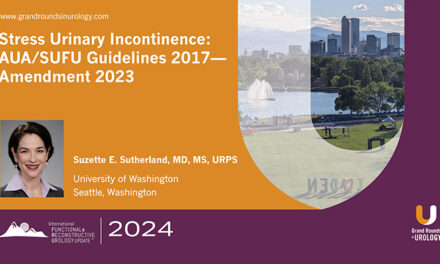Larissa V. Rodriguez, MD, presented “Which Sling to Use – What, When, Why and Who?” during the Jackson Hole Seminars on February 7, 2018 in Jackson Hole, Wyoming.
How to cite: Rodriguez, Larissa V. “Which Sling to Use – What, When, Why and Who?” February 7, 2018. Accessed [date today]. https://grandroundsinurology.com/recurrent-uti-in-the-setting-of-mesh-implants/
Which Sling to Use – What, When, Why and Who? – Summary
Larissa V. Rodriguez, MD, discusses considerations for midurethral sling surgery to treat stress urinary incontinence (SUI) that the American Urological Association (AUA) guidelines do not cover, including how to treat non-index patients and choosing optimal slings for individual cases. Specifically, she compares the outcomes of retropubic, transobturator, and autologous fascia pubovaginal slings in various patient demographics. She also summarizes the evolution of sling surgery and how it came into widespread use.
ABOUT THE AUTHOR
Larissa V. Rodríguez, MD, is chair of the Department of Urology and the James J. Colt Professor of Urology at Weill Cornell Medicine, and urologist-in-chief at NewYork-Presbyterian/Weill Cornell Medical Center.





